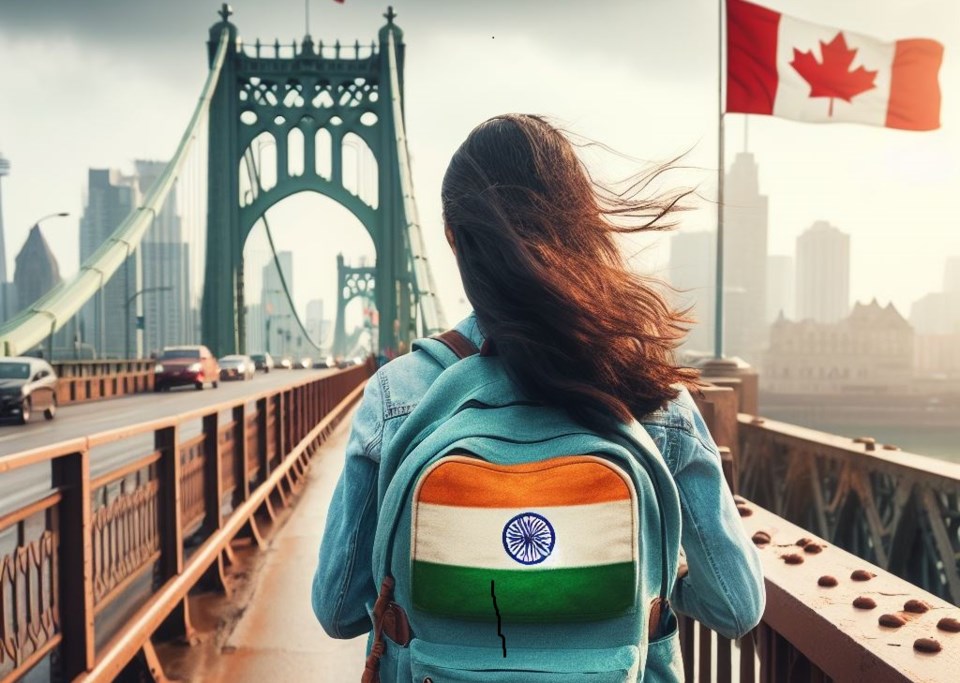Anyone with average vision can see it on the streets.
India is now the dominant source country for new permanent residents to Canada. We see it in North Bay, and they see it in Timmins, Sudbury, Sault Ste. Marie and everywhere else.
John Ibbitson’s Globe and Mail column May 10 cited the data. While India used to be one of a number of top source countries, it now leads the pack by a large margin.
In 2001 China was the top source country, with 40,315 people, with India second at 27,848 and Pakistan third at 15,341. In 2006 it was China, India, Philippines, in that order.
In 2011 Philippines was the leader, followed by China and then India. In 2016 it was still Philippines in front, followed by India and Syria.
In 2021, India accounted for 32 per cent of the total, with 127,933 new permanent residents. It was followed by China at 31,001 and the Philippines at 18,021. China represented eight per cent of the total and Philippines four per cent.
India is very hot, and overcrowded as the world’s most populous country, and wages are low, compared to Canada’s. That explains why many want to leave for a better life, but of course, there are many other factors as well.
With the recent local news coverage of cricket in North Bay, we see that the players are not from England or Australia. They are mainly from India, but also Pakistan, Bangladesh, Sri Lanka and Caribbean countries.
See" As cricket grows locally, North Bay Panthers look for a home
My wall map of clients’ countries of origin tells the story visually. I have one client from Australia, and one from New Zealand. They don’t emigrate to Canada in large numbers.
That compares to 95 from India and 43 from the Philippines. There are 17 from Bangladesh and six from Pakistan. None of these numbers include family members.
I have 18 from Mexico, 21 from South American countries, 20 from African countries, 17 from Caribbean and Central American countries and the remainder of the 354 total are scattered from around the world. Only seven are from China.
The latest census information available, from 2021, has North Bay’s population at 52,662. The immigrant population was 2,615 and only 130 were from India. Since then that number has likely increased ten-fold. We won’t know for sure until the next census in 2026, with results published in 2027.
World events change immigration patterns, and so do Canadian federal government immigration changes.
We saw the local increase in people from India over the last few years as a direct result of people coming to Canadore College, and to a much lesser extent, Nipissing University to study, graduate, obtain a Post-Graduation Work Permit, and then apply for permanent residence.
The Rural and Northern Immigration Pilot has been a major reason why they want to study in North Bay. It leads to permanent residence with a much smaller pool of competitors than in the Express Entry categories or provincial nominee programs.
Canadore also had thousands of international students at its private-public partnership colleges in the GTA, but that cash cow is now gone with the recent federal edict that studying at a private college will no longer lead to a Post-Graduation Work Permit.
Ontario is seeing its international student numbers cut by half for this coming fall, so that will have an effect on Canadore’s North Bay operations.
Ibbitson’s Globe and Mail column notes China has invested in post-secondary education and its strong economy is keeping most students at home. India is trying to do the same, but has not had China’s success so far.
He says the surge from India may soon come to an end, citing the cutback in study permits for international students and the sanctions against private colleges.
Will we see fewer students from India coming to North Bay? Perhaps, but Canadore’s strong reputation and the RNIP program, to be renamed this fall, will keep them coming.
See: New immigration pilot will target rural communities
The city needs them. Many were Registered Nurses in India and come here to take a health care program at Canadore as a conduit to a work permit and permanent residence. They end up working as Personal Support Workers while they go through all the bureaucratic hurdles of their profession to become RNs again.
PSWs and RNs are in huge demand, as are just about all healthcare professions. I also have clients from India who are dentists, IT professionals, pharmacists, and accountants, all in demand in our city.
My prediction is many students who may have been attracted to the private colleges in the GTA will now come to North Bay instead because we are an RNIP city.
I have written about RNIP extensively and if you don’t know what it is, check my previous columns in the archives or go to their website at www.northbayrnip.ca
Editor’s Note: Don Curry is a Regulated Canadian Immigration Consultant living in North Bay, and a member of Bay Today’s community advisory committee.



